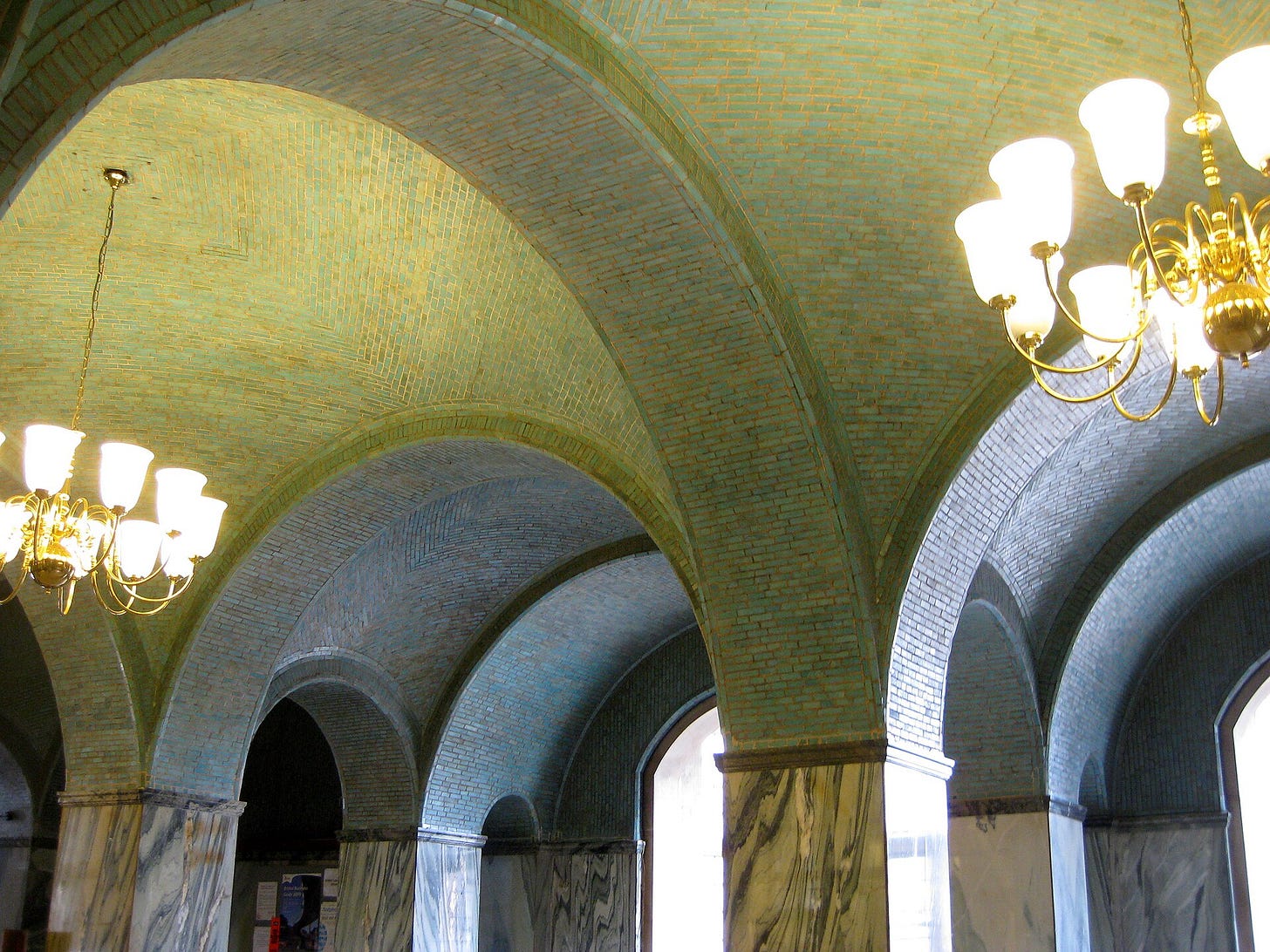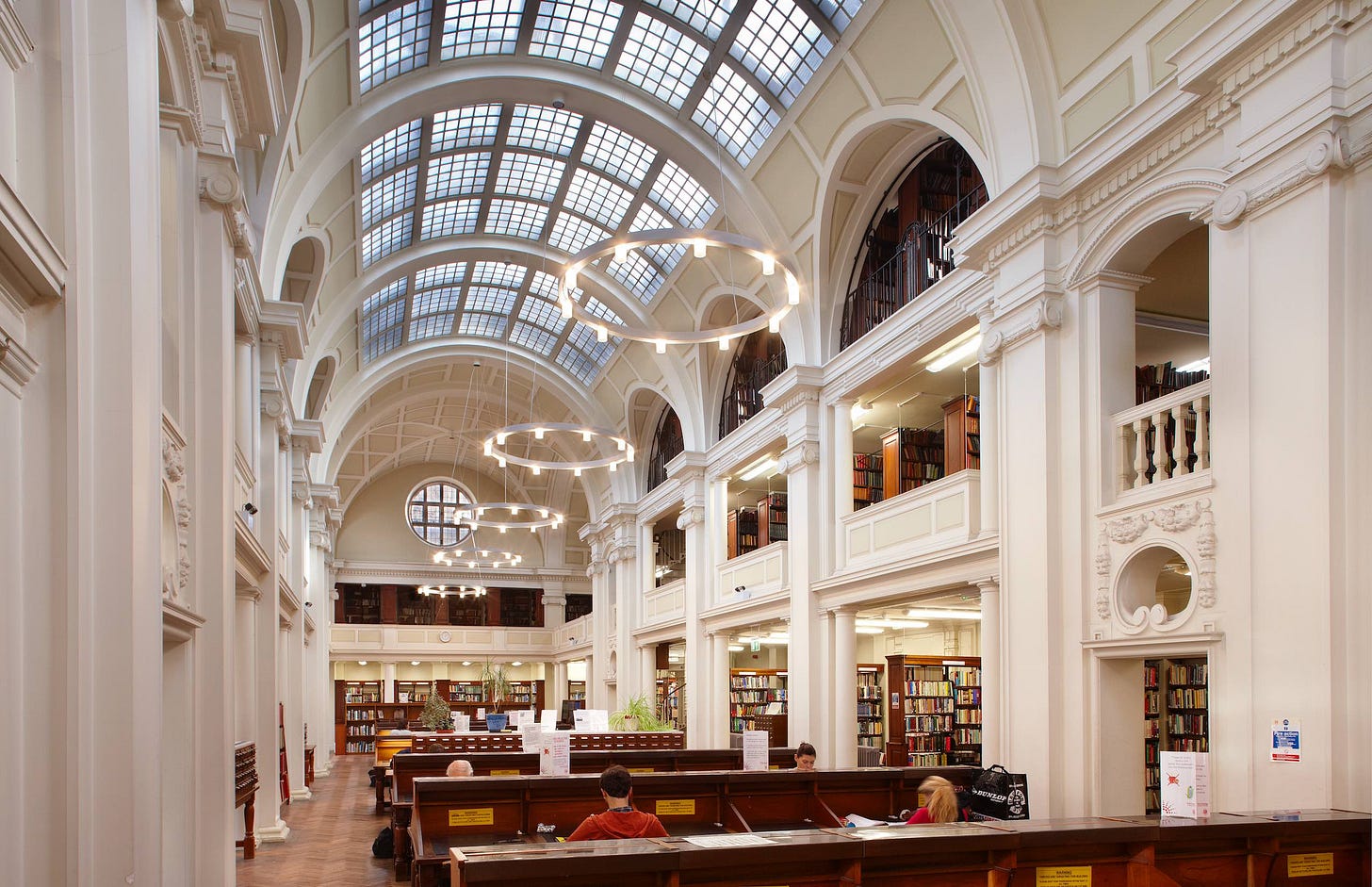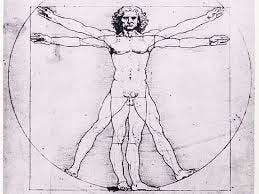Writing in buildings
Ancient architectural theory and how our brains process beautiful spaces.
I’ve been thinking a lot about the spaces within which we write. I have long held the belief that a “good” writing space spurs creativity – a vague conviction I sometimes put down to snobbery, and sometimes a heightened aesthetic awareness.
Recently, I was lucky enough to work in Bristol’s Central Library. This is a free experience; anyone is welcome to walk in from the street through the vaulted entrance, ascend the marble staircase, and nestle themselves into one of the numerous work desks in the Reference Library Reading Room between the stacks (I will never not love stacks…the smell of them, dusty and patient).
It was in these stacks that I opened my laptop to write the first chapter of my next novel. I’d positioned myself next to the Architecture section. Books about Renaissance palazzi and their hidden gardens, Ancient Greek temples and Roman public buildings encouraged me to pay attention to the space in which I worked…and I did work. In fact, I worked better in this beautiful, sprawling room than I had done in a very long time.
Looking around me, my fellow readers and typers seemed to be under a similar spell. Phones were mostly placed on people’s desks, yet no-one was scrolling, nor checking their screen at needless intervals.
Can spaces really affect our creative productivity this much? Is a beautiful library all we need to solve society’s chronically shrinking attention span?
Perhaps.
After finishing my chapter, I did a little digging into the Architecture books. This is a comfortable space for me: I read Classics at university and my favourite discipline was the architectural planning and design of temples and towns.
Whilst browsing the Roman architecture section, I was reminded of the three principles the Roman architect Vitruvius stated that all buildings should have: firmitas (strength), utilitas (utility) and venustas (beauty). His theories about proportion in both buildings and the human form inspired Leonardo da Vinci’s Vitruvian Man. His meditations on proportions in architecture – that it is an imitation of nature – argue that the ancient Greeks before him built temples according to their strict orders to first understand proportion, which helped them to understand the ‘greatest work of art’: the human body.
For Vitruvius, then, architecture necessarily existed in the image of humans and the human experience. It is our strength, utility and beauty we experience when we enjoy an aesthetically pleasing building. We are, quite literally, right at home.
I’m no neuroscientist but neurological studies exploring why certain specific elements of architecture (like bilateral symmetry, for example) are pleasing to the human brain have begun to be treated with more rigour over the last couple of decades. Humans are more likely to associate symmetry with beauty.
It’s not a stretch (at least, in my mind) to suggest that humans create more effectively in spaces that speak to (if not imitate) their inner psyche and preferences. I will certainly be seeking out more beautiful spaces in which to write!
Do you have a favourite spot?







I'm totally with you on this, I adore beautiful spaces that are meant to be conducive to writing, especially the grandeur and majesty of libraries. BUT...(uh oh, there's always a but!) I've often struggled to produce my best work in such lovely venues. When I was at Edinburgh, I tried but consistently failed to get any work done at the National University of Scotland.
You, and others, might kill me for admitting this, but I get so much good writing done in pubs and cafes, and perhaps it's the hustle and bustle and general everyday noise I thrive off (I never wear headphones). Even worse, here in Vienna, despite all its wondrous cafes, I did a lot of my best writing for my first book at...[gulp...] Starbucks, even though I'm not a fan of their coffee anymore.
Maybe I'll take my chances at the Österreichische Nationalbibliothek for my next book!
This is a really interesting question and, I too, have found spaces to work which, at the time, felt more conducive to creating. Often, they were libraries and when I was living in Manchester I would frequent the John Rylands library where I could nestle down into a study nook and work alongside ghosts of students past. That place oozed dark academia vibes!